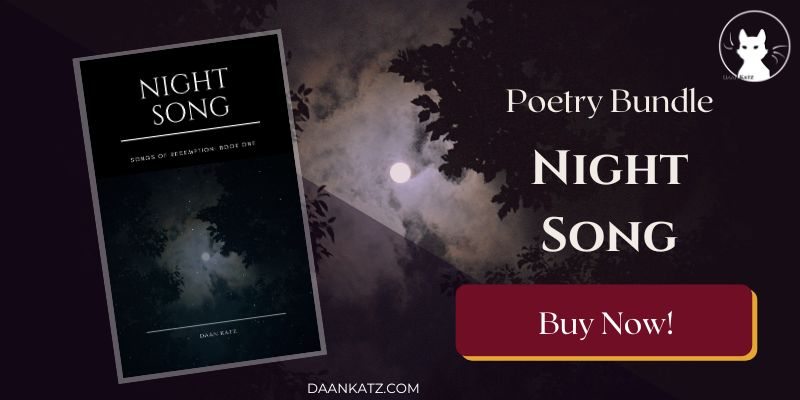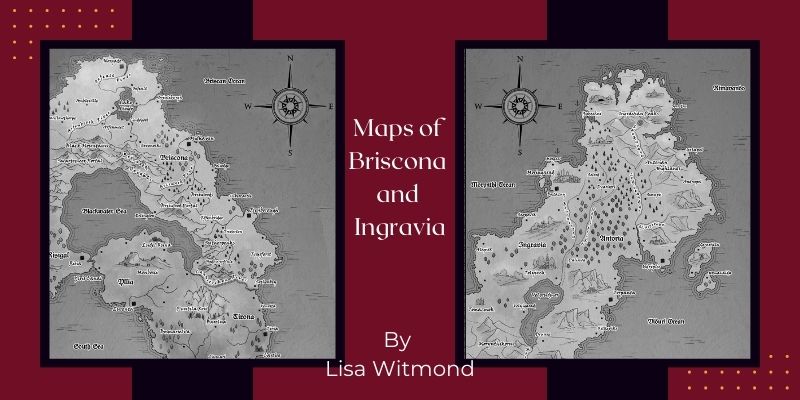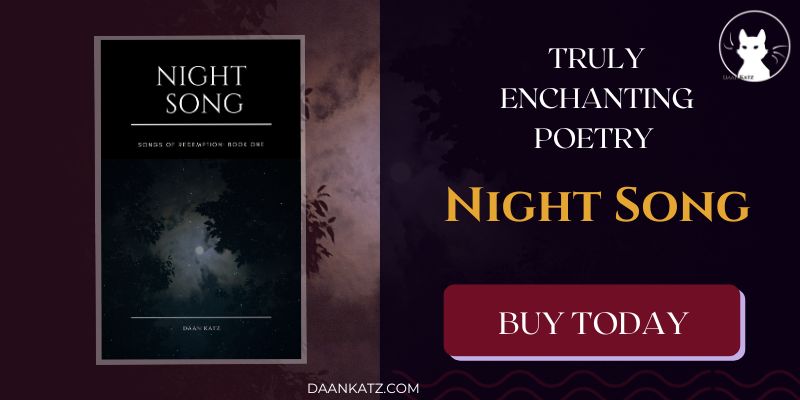A fantasy world isn’t born out of nowhere. When I first started writing my debut novel “Night’s Reign”, I hadn’t done much worldbuilding yet, because I’m a discovery writer. My worlds, my characters, my stories… they evolve as I write.
Table of Contents
The Evolution of Niels’ Story
Niels Bosch, the male protagonist from Night’s Reign, was first given life in the Sims. That’s where his story started. One of many stories I had no intention of ever publishing.
But Niels stuck with me. His story grew, and little by little, his world changed. No longer was it just a neighbourhood in the Sims. It grew into an entire fantasy world, Sor.
However, Sor isn’t your typical fantasy world inspired by the Anglo-Saxon mediaeval model. Sor is a modern world with a nostalgic feel; the perfect blend of old and new. It’s a world where modern medicine and age-old magic exist side by side.
On Sor, you won’t find many of the standard fantasy monsters and races. Instead, Sor is inhabited by humans and other humanoid species from other worlds. It’s also the home of dragons, manewolves, and prowlfoxes, to name just a few of the many different species.
The Creation Myth of Sor
Of course, worlds don’t just come into being. They are created, either by a deity, or by something else. Something neither science nor religion has been able to fully explain yet. So many questions, and so few definitive answers. A veritable writer’s utopia. The Muse thrives on unanswered questions.
For the creation of Sor, I needed a religious explanation because my protagonist, Niels, is a priest. I knew he served a goddess, to whom he referred as “The Lady”. Later, I learnt that her name was Eylah.
As I was writing the story, I gradually gathered more detailed information. There were seven gods. Actually, make that nine. Mmm, well, maybe even more, but let’s not get ahead of ourselves here…
And so the Creation Myth of Sor was born.
The beginning Before the Beginning of Time, an awareness began to stir in the midst of the Void. The awareness grew and became God, and God was everything, and God was nothing. A being without substance, pure energy. And God became two. Male and Female, and they named themselves Zinnir, He who watches, and Oummi, She who hears. They made their dwellings in Oummi’s Vastness and had seven children. And their children created the worlds.
You’ll find the creation myth and 46 other short fantasy poems in my poetry bundle “Night Song” which, incidentally, is one of Sor’s sacred texts.

Research and Dedicated Worldbuilding Time
The basics were done. I knew how Sor came into existence, I knew who the major gods were, and—just as importantly—I knew Sor was a relatively modern world.
From Niels’ story, I already knew there were several continents. Each with their own natural, cultural, and political landscapes.
But there was even more that I didn’t know yet. I did what any obsessed fantasy writer would do and bought a book on worldbuilding, “The Planet Construction Kit” by Mark Rosenfelder, to help me figure out where and how I needed to fill the voids. It’s a book I still refer back to from time to time, and I can recommend it to any fantasy writer who wants to keep their world building realistic.
Later, while writing the novel, I demolished several of the structures I had built, only to replace them with other, better fitting, structures.
A Realistic Fantasy World
Armed with my worldbuilding book, and Google Search at my fingertips, I applied myself to some rigorous worldbuilding.
Indeed, I set time apart to figure out how plate tectonics had broken up my originally dragon-shaped continent into several parts that drifted apart to create the five current major continents. I figured out how ocean currents influenced the weather, how volcanism had created mountain ranges, and much, much more.
But I also knew I needed to keep things simple, so… I opted for Sor to be what’s called a Class M planet in Star Trek terminology. Sor has one sun, one moon, and a water-land ratio of roughly 70/30. Sor is about the same size as Earth, and travels at a similar pace and distance around its sun, which is about as large and as hot as our own sun. A turning on Sor is roughly as long as a year on Earth, and the days last 24 hours.
Like I said, I kept things simple. I just couldn’t be arsed with all the mathematical fuss that goes into creating worlds that are too unlike our own.
Crafting a Map of my Fantasy World
I created a map. A functional working map, with all the continents and their countries in the right places—or so I thought.
Later, I discovered I needed to move an entire country to another part of the continent on which it was situated. Out came the scissors (literally!), and that country was cut out and moved around to a more fitting location. Then, of course, some cities had to be renamed. Because a city named Westhaven in the East of the country just won’t do.
This working map became the basis for the maps of Briscona and Ingravia that my visual artist, Lisa Witmond, created for me.

The History of my Fantasy World Sor
Clearly, when you have an old world, formed over thousands, if not millions of turnings, your world has a history. Guess what I had very little of?
Oh, I had some history uncovered while writing that first draft of “Night’s Reign”, but not nearly enough to account for… well everything. So I created a detailed historical timeline spanning the last 500 turnings before the story starts, and wrote some short stories covering pivotal moments in the history of Sor. What happened before that is (for now) lost to the annals of Sor’s history, but Sor’s archaeological explorations are ongoing.
From history, it’s a small step to politics and societal and cultural differences. In fact, history is shaped by these factors. Societies don’t evolve in a vacuum. Factors like, e.g. geography, climate, and population density influence how people behave. When you grow up in a densely populated flat country that’s constantly threatened by the sea, you have a very different outlook on life than someone who grew up in a remote mountainous area. The language a person speaks both affects and mirrors their behaviour, and reflects their cultural background.

When you stop to really think about it, you’ll find out that everything is interconnected. And that is the real challenge of worldbuilding. But it’s a worthwhile endeavour, because, when done well, it can greatly enhance your storytelling.
The Power of the Writer
As you see, a lot of work goes into the creation of a realistic fantasy world like Sor. Now imagine having to create seven interconnected worlds. Because that’s what I actually did. Each of the seven sibling gods of my fantasy universe created a world of their own. But, because they are siblings, they enabled travel between each of their worlds.
Currently, none of my other worlds is as fully developed as Sor, which is my main fantasy world in the “Curse of the Fathers” series, but I intend to eventually develop all worlds just as fully. And then some. Because, honestly, there’s still so much I don’t know about Sor yet. So much I discover through my writing as my stories take shape.
Being a writer truly is like being a god. It may be hard and challenging, but never boring, and the thrill of creating something out of nothing, with just the power of your mind…
Nothing compares to that.


